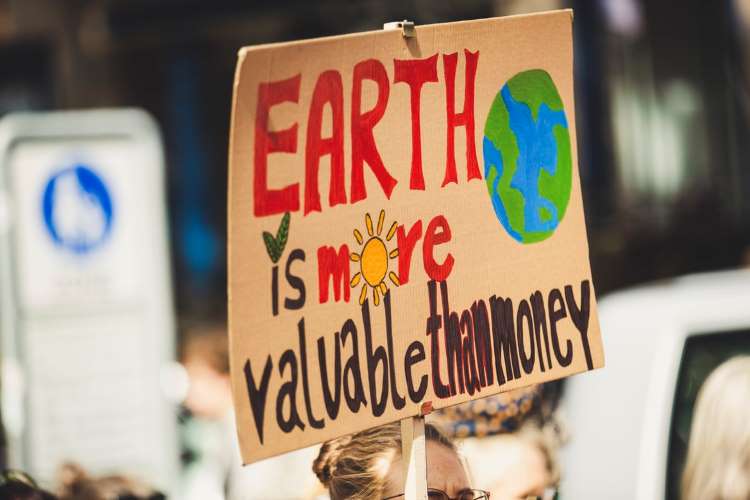
In June, the northern states of India, especially the hilly regions, witnessed devastating floods. The residents of Himachal Pradesh, Punjab, Chandigarh, Uttarakhand, Jammu and Kashmir, Haryana, Rajasthan and Delhi suffered the fury of nature. The flood highlights a timeless truth about the intimate connection between humanity and water. We are all aware of the intricate linkages of water, energy, climate change and biodiversity. These forces of nature express the delicate balance that water maintains, impacting every facet of our existence.
Water, beyond its essential role of quenching our thirst, holds a profound influence on our food patterns. Delving into the fabric of this discussion, it is crucial to acknowledge the broader interdependences of unrelated events. For instance, the air pollution crisis gripping Delhi has its own linkage with the groundwater policies of Punjab. The cultivation of non-native crops in different parts of the country driven by socio-economic factors, contributes further to increased water stress.
This interconnectedness resonates with an age-old narrative, the tale of “Dai Ka Talab,” authored by Anupam Mishra in his book ‘The Talabs of Darbhanga.’ The king of Darbhanga was renowned for his wealth and generosity and in his kingdom there used to live a wise and learned person called Ayachi Pandit.
READ I European electric vehicles challenge leaders Tesla, BYD
Ayachi Pandit, an enigmatic figure, eschewed seeking aid from anyone in return for his wisdom. However, circumstances changed when his wife becomes pregnant and he requested a midwife for taking care of his wife and then a baby boy was born. The midwife witnessed Ayachi Pandit’s near-empty bag during the time of payment. In a whispered exchange, he communicated a message to the midwife.
The narrative takes an unexpected turn after many years, when the king needed advice and soldiers arrived at Ayachi Pandit’s residence to meet him. Unavailable at the time, his son stepped in to handle the situation. This encounter propelled the son into an audience with the king, where his wisdom shined through the successful implementation of his advice to the monarch. The king showered gifts on the boy. The boy came to Ayachi Pandit, told him about his feat and gave his rewards to his father.
The Pandit called the midwife then and gifted all the king’s rewards to her pointing out that he had promised to her after his son’s birth, that he will give her his son’s first earning. The midwife, understanding that she has been rewarded more than she deserves, used most of it to create ponds across Darbhanga for the community. These ponds are currently known as “Dai ka talab.” Ayachi Pandit’s response to his acquired accolades, and its eventual impact on a humble midwife, highlights the complex layers of human behaviour, morality, and reciprocity on importance of water, ethical conduct, and honouring the commitment.
At the heart of this fable lies a poignant realisation — the symbiotic relationship we share with the earth. As Atharva Veda (Prithvi Sukta, Shlok no.- 12) preaches us, the earth nurtures us in the same way as a mother would and the rains nourish us as a father would do. This sentiment echoes through generations, resonating with the modern concepts of Environmental, Social, and Governance (ESG) practices and it encompasses a broader vision of sustainability.
When we come to the context of implementation of ESG, there is a dichotomy that that investors will give a company financing only when the company takes care of the earth. The ethos of Indian culture professes treating earth as mother earth, and the process of ESG implementation reminds me of a practical example which we observe in our day-to-day life.
ESG and sustainability
In our neighbourhood, when a person does not take care of his parents, someone goes and advises him that if you do not take care of your mother or father, the house that you are residing may not be handed over to you by your father and mother. In today’s landscape, ESG policy is being formulated in the same way where businesses are trying to work on those aspects only on the ground that investors will not fund them if they do not work on ESG.
In this intricate tapestry, it becomes essential not to limit the purview of ESG solely to the investor community. The dichotomy of ESG and sustainability, while nuanced, should not dilute the overarching objective of fostering ethical practices that transcend mere legal compliance. There is plethora of ESG reports with 31 such names such Corporate Citizenship Report, Sustainability Disclosure Standards, Global Citizenship Reports etc. There are number of debates and research articles on the difference between ESG and Sustainability and sometimes they define that sustainability is broader and ESG has very sharp metrics.
The government of India through the Securities and Exchange Board of India (SEBI) rightly came out with guideline for ESG but named it Business Responsibility and Sustainability Reporting (BRSR). The very nomenclature can perplex the uninitiated that if the terms are different, how is it that an ESG report is named as a sustainability report.
Over the years, many standards and frameworks have been developed worldwide to guide companies for sharing their applicable environmental, social and governance information with interested parties and investors. These consists of the Global Reporting Initiative (GRI), the Greenhouse Gas Protocol (GHG-P), the Sustainability Accounting Standards Board (SASB), and the Taskforce for Climate-Related Financial Information (TCFD) and many others. The harmonisation of diverse reporting standards is needed for better clarity and comparison.
In an era marked by heightened awareness of environmental challenges, social inequalities, and corporate governance shortcomings, the concept of ESG harmonisation has emerged as a beacon of hope, uniting the realms of sustainability and finance. The world today needs globally accepted sustainability reporting standards to ensure evident, equivalent information for all stakeholders – businesses, investors, customers, employees, suppliers, regulators and governments.
ESG issues have no boundaries as climate change, human rights, and social inequality are universally relevant. Harmonisation acknowledges the global nature of these challenges and strives to create standards that resonate across cultures and geographies. By establishing a shared foundation for evaluating sustainability, harmonisation can help align economic activities with broader global objectives, such as the United Nations Sustainable Development Goals (SDGs).
So ESG reporting can be made simpler and it should not be meant only for investors of company for financing, but also should be linked to common person. It should also offer clarity to a graduate, coming out of a college, wanting to work in a company based on their ESG rating.
Consider, for instance, the stipulation that companies allocate 2% of their profits to Corporate Social Responsibility (CSR). While such a regulation is well-intentioned, it fails to account for the potential impact on communities located near unprofitable ventures, that does not commit themselves on CSR, based on the rule leading to suffering of community and imbalance of socio-economic structure of the locality. This scenario underscores the need for an integrated approach, where responsible actions extend beyond profitability, safeguarding both the environment and society.
ESG is not a new subject and find its roots in the belief of socially responsible investing which developed in the 1960s. In the 1970s, Reverend Leon Sullivan, made a Code of Conduct in 1977 used for practising business with South Africa in Apartheid era known as the Sullivan Principles (Sullivan Code).
The term ESG was used for the first time in a 2004 report labelled “Who Cares Wins”, which was a joint project of financial organizations at the invitation of UN. As a topic, ESG expanded its importance after 2010s and its prominence was felt in recent years as an effect of the 2015 Paris Agreement on Climate Change. From FY 2022–23, it became mandatory for the top 1000 listed entities by market capitalisation to file a BRSR.
Within this paradigm, the challenge of climate change stands out as a stark reminder of interconnectedness. Often, those who suffer the most are not the ones contributing significantly to the crisis. Developing nations withstand the worst of climate change caused by the profligate consumption habits of their developed counterparts. This underscores the imperative for collective action transcending geographical and socioeconomic boundaries.
Amid the clamour of metrics and reports, it is the moral compass that guides us toward responsible decisions. In the grand tapestry of existence, we find ourselves at crossroads. It reminds us that our actions today shape the legacy we leave for generations to come. As we grapple with modern challenges, we can draw wisdom from the past to create a future that embraces sustainability, accountability, and the harmonious coexistence of all living beings.
ESG harmonisation is more than a financial trend, it is a moral imperative that bridges the gap between sustainable development and economic growth. By forging a common language for assessing corporate responsibility, we pave the way for a future where financial decisions and sustainable practices go hand in hand. As we embark on this transformative journey, the potential to create a world of shared prosperity, environmental stewardship, and social progress shines brighter than ever before.
The author is Executive Incharge, Ferro Alloys and Minerals Division, Tata Steel Ltd. The views expressed in this article are of the author and not necessarily those of the company he is associated with.


